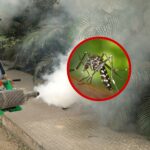Fly infestations cause serious disruption in commercial settings. Flies can aggressively spread germs across a commercial space. They can instantly ruin customer perception. Commercial properties have more food exposure, odor production, organic waste output, moisture zones, and warm machinery that supports fly development.
Industries with food service, beverage service, trash production, and public foot traffic are quite vulnerable to fly issues. Many business owners underestimate how flies sneak into drains, mop buckets, dirty rags, floor sinks, produce bins, and garbage transfer areas. Flies survive in conditions that seem harmless. This is where businesses run into trouble. Thankfully, businesses dealing with flies can turn to Pesto Pest Control for professional service. They can visit prestopestcontrol.com to learn more about their options.
Why Flies Target Commercial Properties
Commercial businesses have constant food contact movement. Food prep areas, dining areas, delivery zones, dumpsters, and cold storage transfer stations produce scent. Flies follow scent trails. They are drawn to fermentation odor and sugary residue. Moisture areas inside floor drains and mop sinks allow fly larvae to thrive undisturbed.
In the summer months, humidity accelerates fly breeding cycles. The longer temperatures hold heat, the more intense the fly problem grows.
Food Service Businesses Experience Increased Fly Activity
Flies infiltrate restaurants, bars, bakeries, coffee shops, bistros, fast food chains, grocery stores, and food trucks. Fruit flies flock to alcohol residue, overripe produce, syrup residue, liquor drops, floor drains, and soda gun nozzles. Drain flies appear in dish pit zones, mop bucket stations, and drain traps. House flies land on trash lids, raw food, and prep boards. These pests carry bacteria, transfer pathogens, lay eggs fast, and increase population count. Customers notice flies in restaurants instantly. Flies create direct conflict with expectations of food safety and sanitation. Owners of food service establishments know how quickly a fly problem destroys online reputation.
Flies Threaten Sanitation Ratings and Compliance Scores
Commercial environments are held to health codes. The presence of flies in a food service environment is a direct sanitation violation. Inspectors often pull sanitation ratings when their assessments discover fly swarming, larval presence, or drain fly breeding. A low rating impacts revenue. Guests search ratings before they choose where they dine. Food delivery platforms often delay onboarding or freeze listing visibility when sanitation grades decline.
The Spread of Disease from Fly Contact
Flies pick up germs from garbage piles, animal waste, dumpsters, public restrooms, street waste, compost piles, and stagnant water zones. They fly directly from filth contact into areas where food is served. Bacteria spread through saliva, body hair, and waste that flies leave behind.
High-density pedestrian movement year-round can lead to more trash exposure across commercial corridors. Waste transfer areas at the back of strip malls or restaurant clusters create ideal fly breeding pockets. Flies that populate near alley dumpsters may enter kitchens through small gaps, utility pipe lines, torn weather seals, and worn-out door bottoms.
Office Buildings and Corporate Workspaces Are Not Immune
Office buildings create food waste daily. Break rooms, coffee prep stations, and refrigerators can draw flies. Staff members do not always wash containers, compost waste properly, or maintain sink strainers. Drain flies form in stagnant organic build-up within floor sinks and gaskets. In addition, reception areas that serve beverages or candy bowls attract fruit flies. The office cleaning crew sometimes focuses on trash disposal but ignores drains.
Warehouses and Distribution Facilities Face Hidden Fly Risks
Warehouses store goods for long periods. Supply chain turnover permits rapid entry of contaminated packaging. Many warehouses lack active eyes in every zone due to size. Flies multiply undetected in unused corners or forgotten containers.
Businesses that process returns face a higher risk. Food product returns or beverage returns that sit during sorting release scent signals for flies. Seasonal climate changes amplify the problem in large buildings.


